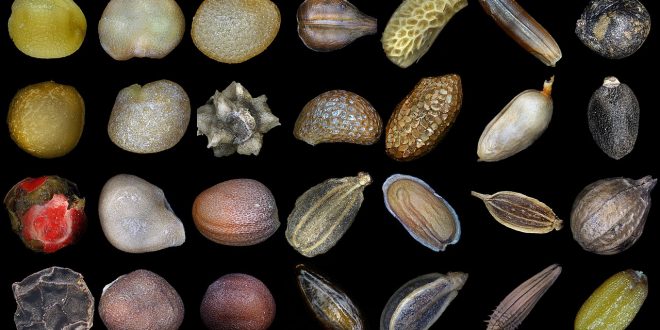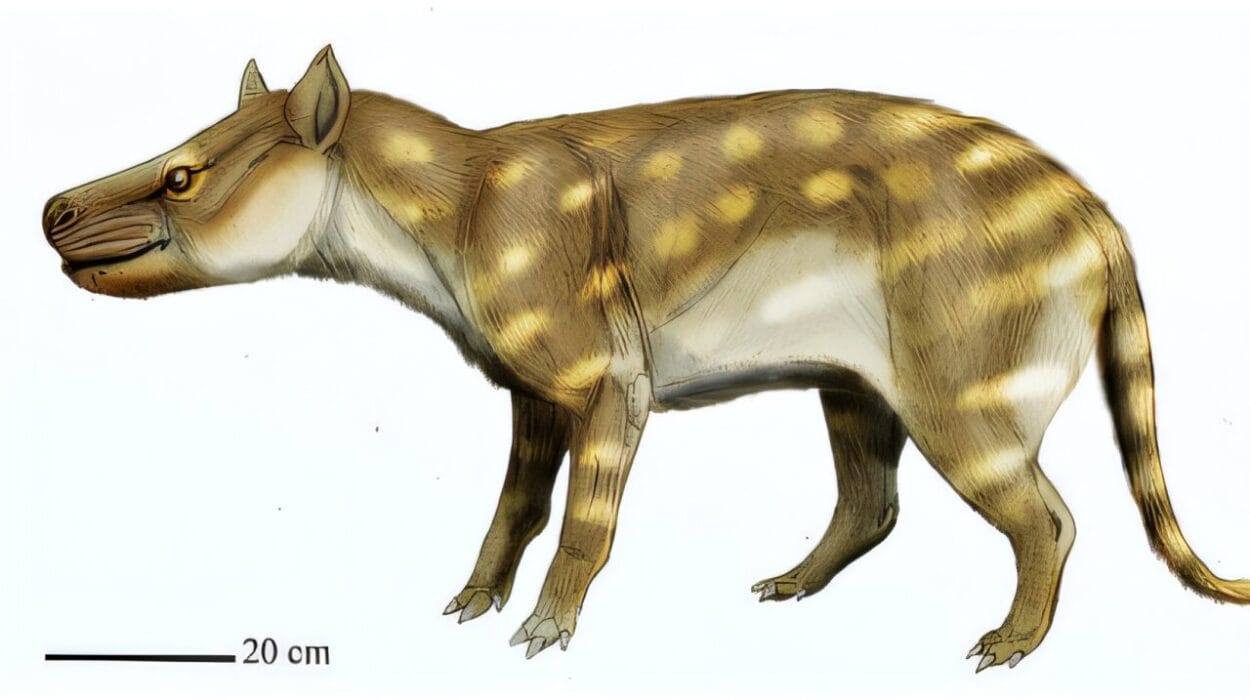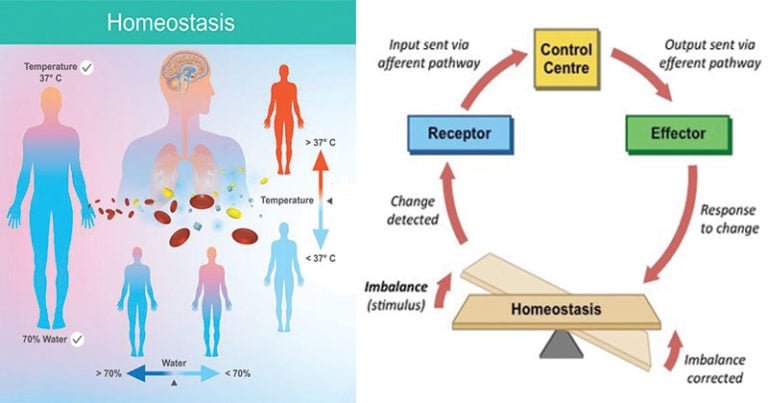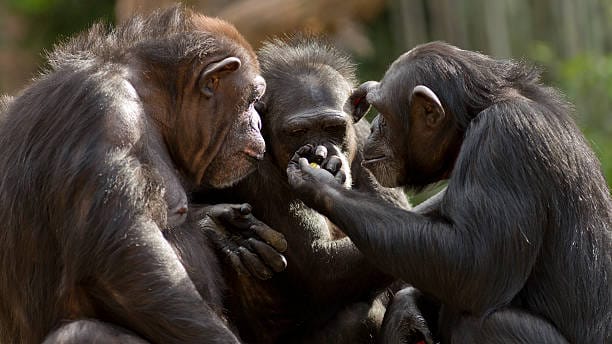In the remote reaches of Earth, beneath layers of soil, nestled in cracks of ancient rock, and encased in deep layers of ice, lie dormant seeds. These seeds, quietly slumbering, hold the potential of life within their fragile husks. Some have been asleep for centuries—millennia, even—and yet, in an act of miraculous revival, they can wake up when conditions are just right. These are the seeds that defy time, the slumbering giants of the plant world, waiting for their moment to rise again.
The phenomenon of seeds lying dormant for incredibly long periods and then germinating—sometimes after centuries—has fascinated botanists and scientists for generations. They seem like nature’s time capsules, each one a silent witness to the passage of time, only to come to life when the world around them changes. They are a reminder that life on Earth is not always as fleeting as we think, and that resilience is hidden in the most unexpected corners of our planet.
The revival of ancient seeds is not only a story of survival but also a tale of adaptation, tenacity, and the incredible potential of life to endure through impossible odds. But how do these seeds manage such a feat? How can they remain in a state of dormancy, like a dreamer lost in a long, peaceful slumber, only to awaken when the world is ready for them?
The Mysterious Dormancy of Seeds
Seed dormancy is a natural phenomenon. It is the plant’s way of ensuring that it germinates at the best possible time. Just as animals hibernate to survive harsh winters, seeds enter a deep state of rest to outlast unfavourable conditions. This period of dormancy can last anywhere from a few months to a few years, depending on the plant species. For most plants, dormancy is a temporary condition, a survival strategy to avoid sprouting in times when the environment is too cold, dry, or hostile.
However, some plants take dormancy to an extraordinary level, entering a state of near-perfect suspension for periods that stretch far beyond what we consider “normal” for seeds. This extended dormancy occurs in only a few rare species, and scientists are still unraveling the mechanisms that allow them to remain viable for hundreds or even thousands of years. The key lies in the seed’s ability to preserve itself, essentially “pausing” its metabolic processes, and allowing its internal machinery to remain intact for incredibly long periods.
Seeds that can sleep for centuries have perfected this art of survival. During their dormancy, they are largely inert, their metabolism slowed to the bare minimum. It is a remarkable feat of nature—one that has fascinated researchers, offering us insights into resilience, evolution, and the ways in which life adapts to the changing world.
The Science of Seed Dormancy: The Sleeping Giants
Understanding why some seeds remain dormant for centuries requires diving into the biological mechanisms behind dormancy. A seed contains an embryo, the tiny precursor to a plant, surrounded by a protective seed coat and, often, a store of nutrients. For most seeds, germination happens when water, warmth, and oxygen are available, triggering a cascade of biochemical reactions. These reactions break down stored nutrients and allow the embryo to grow into a seedling.
However, in certain seeds, this process is halted by a combination of factors, from environmental cues to biochemical “brakes” that keep the embryo in check. These brakes are a complex web of hormones, proteins, and genetic controls that prevent the seed from sprouting prematurely. These seeds are “programmed” to wait—sometimes for centuries—until the conditions are right.
For some seeds, these checks are due to the thickness and composition of their seed coats, which can be impermeable to water and gases. Without access to the right environmental signals—such as the right temperature or moisture—they remain in stasis. The seed coat essentially locks the embryo in place, allowing the seed to endure environmental extremes such as drought, freezing temperatures, and even fire.
One of the most critical players in the dormancy process is a hormone called abscisic acid (ABA). ABA inhibits germination by suppressing the activity of the genes responsible for growth. When environmental signals such as light, temperature, or moisture change, the balance between ABA and other hormones shifts, allowing the seed to “wake up.” Until then, the seed remains in a sort of suspended animation, conserving its energy and waiting for the perfect conditions to begin its life cycle.
In rare cases, seeds will enter a state known as “quiescence,” in which they are essentially inactive but can spring to life when environmental conditions are right. This is the kind of dormancy seen in seeds that sleep for hundreds or thousands of years, sometimes even in the face of harsh and changing climates.
The Ancient Arctic Secrets: 32,000-Year-Old Seeds
Perhaps the most famous example of ancient seed revival comes from the Arctic. In the frozen tundra of Siberia, researchers have discovered seeds that have remained dormant for tens of thousands of years. One of the most astonishing finds occurred in 2005, when Russian scientists unearthed a batch of ancient seeds buried in the permafrost of Siberia. These seeds were identified as Silene stenophylla, a species of flowering plant.
The seeds, which had been frozen for approximately 32,000 years, were remarkably well-preserved. Scientists carefully germinated the seeds in controlled conditions, and to their astonishment, the seeds sprouted. It was as if time had not passed at all for these tiny life forms.
This extraordinary discovery was a breakthrough in our understanding of seed longevity. The seeds had remained dormant for more than 30 millennia, surviving in a deep freeze that preserved their viability. It wasn’t until the permafrost began to thaw, releasing them from their icy tomb, that the seeds could finally germinate. The miracle of their revival raises fascinating questions: how could they survive in the frozen soil for so long? What secrets do these ancient plants hold?
The process of seed revival from the ice is a true testament to the resilience of life. But while we may marvel at the idea of ancient seeds coming back to life, the question remains: what is the purpose of such prolonged dormancy? And why would nature design seeds to remain dormant for tens of thousands of years?
Why Do Some Seeds Sleep for So Long?
The answer to this question may lie in the environmental conditions faced by the ancient plants. During the Ice Age, the climate in Siberia was harsh, and the landscape was constantly shifting. As glaciers advanced and retreated, the environment would have experienced dramatic changes, from cold, frozen conditions to warmer periods when plant life could flourish. The plants that produced these ancient seeds were likely adapted to these unpredictable cycles, evolving mechanisms to endure in the face of changing climates.
By entering a deep state of dormancy, these plants could “wait out” the worst of the cold and return to life when conditions improved. In a sense, their seeds acted like time capsules, holding the genetic information of an entire ecosystem within them, waiting for the right moment to emerge. The long dormancy ensured that the plant’s progeny would survive even during the most extreme climatic fluctuations.
The revival of these ancient seeds, then, can be seen as a response to the cycles of the Earth. As climates warmed and the ice receded, the conditions were right for these seeds to awaken. They were not just surviving—they were patiently waiting for a time when the planet would offer them the perfect conditions for rebirth.
The Mystery of the Sacred Lotus: 1,000 Years in the Mud
Another fascinating example of long-lived seeds comes from the world of aquatic plants. The sacred lotus (Nelumbo nucifera), revered in many cultures for its beauty and symbolism, has been known to produce seeds that remain dormant for centuries. In 1995, Japanese scientists successfully germinated a lotus seed that had been recovered from the sediment of a pond in China. This seed, it was determined, had been buried for over 1,000 years.
The process by which this lotus seed survived for so long is not fully understood, but the plant’s unique environment might offer clues. Waterlogged environments, such as ponds and lakes, can create low-oxygen conditions that slow down the metabolic processes of seeds, effectively preserving them for long periods. The lotus seed may have been preserved in an anaerobic environment, allowing it to remain viable through centuries of environmental change.
Like the ancient seeds of the Arctic, the lotus seed is another example of nature’s ability to preserve life through time. Its revival is a reminder that life is not always as fleeting as we imagine. In the right conditions, even the most ancient seeds can spring to life, offering a glimpse into the past and a connection to the ancient ecosystems that once thrived.
The Future of Seed Dormancy and Conservation
In an age where climate change and habitat destruction threaten biodiversity, the ability of seeds to survive for centuries could have profound implications for conservation efforts. Scientists are exploring ways to preserve rare and endangered plant species by taking advantage of their natural ability to survive prolonged dormancy.
By collecting seeds from endangered species and storing them in controlled environments, scientists may be able to create “seed banks” that safeguard the future of biodiversity. These seed banks act as repositories of life, preserving the genetic material of plants that may otherwise be lost to the ravages of time. In this way, seeds that sleep for centuries could serve as a lifeline for the future of our planet’s ecosystems.
Moreover, understanding how seeds can survive in extreme conditions may lead to innovations in agriculture, enabling crops to be more resilient in the face of climate change. By studying the genetic and biochemical mechanisms behind seed dormancy, researchers could develop new agricultural practices that allow plants to endure harsher environments, ensuring food security in an increasingly unpredictable world.
A World of Wonders Beneath Our Feet
The seeds that sleep for centuries, only to wake when the time is right, are a testament to the resilience of life. They remind us that time is not an unbroken line, but a series of cycles, some so vast that they extend far beyond our human comprehension. They are the silent witnesses to an ever-changing world, waiting patiently for their moment to emerge.
Each seed that lies dormant is a story waiting to be told—a story of survival, adaptation, and an unyielding will to live. When these seeds finally awaken, they bring with them not only the potential for new life, but also a connection to the past—a reminder that life on Earth is as enduring as the soil beneath our feet, always waiting for the right moment to bloom again.






